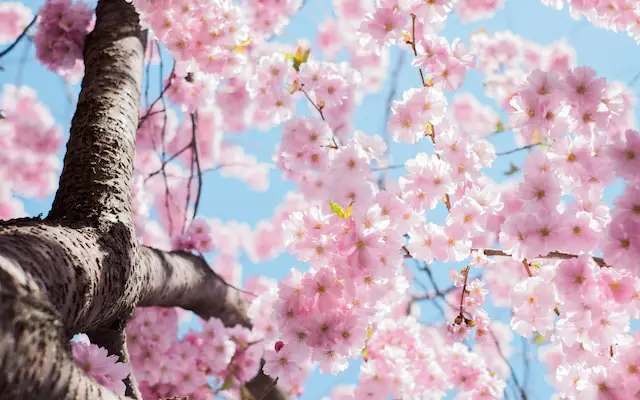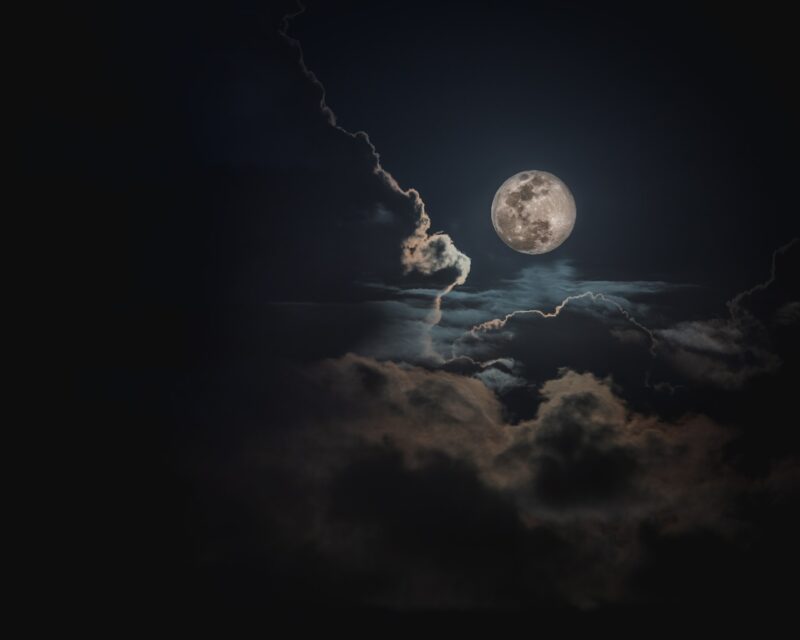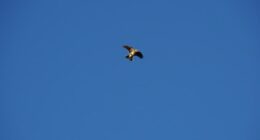The autumnal equinox refers to the first day of fall when the sun is directly over the equator and day and night are of equal length. The vernal equinox, is the first day of spring when the sun is again directly over the equator and day and night are once again of equal length.
The Autumnal Equinox
(Photo by Tim Samuel)

An equinox occurs when the sun is directly over the Earth’s equator, and day and night are of equal length. This happens twice a year – once in the Spring (Vernal Equinox), and once in the Fall (Autumnal Equinox). The word “equinox” comes from the Latin for “equal night”.
During the Autumnal Equinox, the sun moves into the constellation of Virgo. In ancient times, this was seen as a time of harvest and preparation for winter. Today, many people see it as a time to celebrate nature’s bounty and give thanks for all we have.
For those in the Northern Hemisphere, the Autumnal Equinox marks the start of Fall. The days begin to grow shorter and the leaves start to change colour as trees prepare for winter.
The Vernal Equinox
(Photo by Arno Smit on Unsplash )

The vernal equinox occurs when the sun is directly over the equator and day and night are of equal length. This happens on or around March 20th in the Northern Hemisphere and September 23rd in the Southern Hemisphere. The word vernal comes from the Latin word for spring. the vernal equinox is associated with new beginnings and growth, as it signals the end of winter and the start of spring.
Autumnal Vs. Vernal equinox – Key differences
Date: The autumnal equinox occurs around September 22 or 23 in the Northern Hemisphere and around March 20 or 21 in the Southern Hemisphere, while the vernal equinox occurs around March 20 or 21 in the Northern Hemisphere and around September 22 or 23 in the Southern Hemisphere.
Season: The autumnal equinox marks the first day of fall (autumn) in the Northern Hemisphere and the first day of spring in the Southern Hemisphere, while the vernal equinox marks the first day of spring in the Northern Hemisphere and the first day of fall (autumn) in the Southern Hemisphere.
Sun’s position: During the autumnal equinox, the sun appears to cross the celestial equator from north to south, while during the vernal equinox, the sun appears to cross the celestial equator from south to north.
Day and night length: During the autumnal equinox, day and night are roughly equal in length, while during the vernal equinox, the days start to become longer and the nights shorter in the Northern Hemisphere, and the opposite occurs in the Southern Hemisphere.
These equinoxes mark important astronomical events and have been observed and celebrated by cultures around the world for thousands of years.
How Do They Affect Us?
The autumnal and vernal equinoxes are two of the four major turning points in the Earth’s yearly cycle. They mark the transition from summer to winter (autumnal) and winter to spring (vernal).
While they may seem like simple astronomical events, the equinoxes have a profound impact on our lives. For one, they determine the length of day and night. On the day of the equinox, day and night are roughly equal in length. From that point forward, days will get shorter until the winter solstice (the shortest day of the year), after which they’ll start getting longer again.
The changing length of day and night also affects our moods and energy levels. In the fall, as days grow shorter and nights longer, we may find ourselves feeling more tired and sluggish. This is because our bodies are programmed to follow the natural rhythms of daylight and darkness.
The equinoxes also play a role in determining when seasons begin and end. In most cultures, the year is divided into four distinct seasons: spring, summer, fall, and winter. These seasons are determined by the Earth’s position relative to the sun.
What is autumnal vernal?
“Autumnal” and “vernal” refer to the two equinoxes that occur each year. The autumnal equinox occurs around September 22 or 23 in the Northern Hemisphere and around March 20 or 21 in the Southern Hemisphere. It marks the first day of fall (autumn) in the Northern Hemisphere and the first day of spring in the Southern Hemisphere. The vernal equinox, on the other hand, occurs around March 20 or 21 in the Northern Hemisphere and around September 22 or 23 in the Southern Hemisphere. It marks the first day of spring in the Northern Hemisphere and the first day of fall (autumn) in the Southern Hemisphere. These equinoxes are important astronomical events that occur twice a year when the sun is directly above the Earth’s equator and day and night are roughly equal in length.
Is September 22 always the first day of fall?
September 22 is not always the first day of fall (autumn). The first day of fall (autumnal equinox) can occur on September 22 or 23 in the Northern Hemisphere, depending on the year. The exact date and time of the autumnal equinox vary slightly from year to year due to differences in the length of the tropical year (the time it takes for the Earth to orbit the sun once) and the Gregorian calendar, which is the calendar most commonly used today. However, September 22 is a common date for the autumnal equinox, and it is often used as a general reference point for the start of fall.
Does day length decrease after autumnal equinox?
Yes, after the autumnal equinox, day length gradually decreases in the Northern Hemisphere as the sun’s path across the sky moves farther south each day. The rate of change varies depending on the latitude, but in general, the days become shorter and the nights become longer until the winter solstice, which occurs around December 21 or 22 in the Northern Hemisphere. The decrease in day length is a result of the Earth’s axial tilt, which causes the sun’s path across the sky to change throughout the year.
What are the equinoxes and solstices in order?
The equinoxes and solstices occur at regular intervals throughout the year and are important astronomical events that mark the changing of the seasons. Here is their order:
Winter solstice: Occurs around December 21 or 22 in the Northern Hemisphere and marks the shortest day and longest night of the year in the Northern Hemisphere.
Vernal equinox: Occurs around March 20 or 21 in the Northern Hemisphere and marks the first day of spring in the Northern Hemisphere.
Summer solstice: Occurs around June 20 or 21 in the Northern Hemisphere and marks the longest day and shortest night of the year in the Northern Hemisphere.
Autumnal equinox: Occurs around September 22 or 23 in the Northern Hemisphere and marks the first day of fall (autumn) in the Northern Hemisphere.
Note that the dates and times of these events may vary slightly from year to year due to the complexities of the Earth’s orbit and rotation, as well as the conventions of the calendar system.
Featured Image by – Jack Taylor on Unsplash








